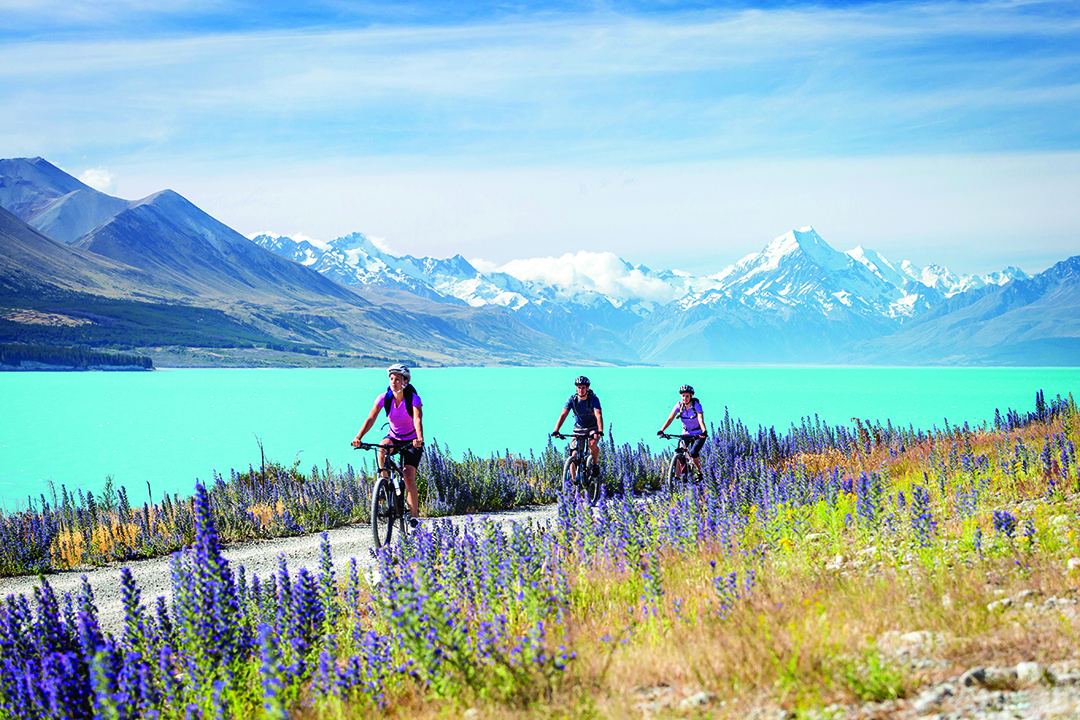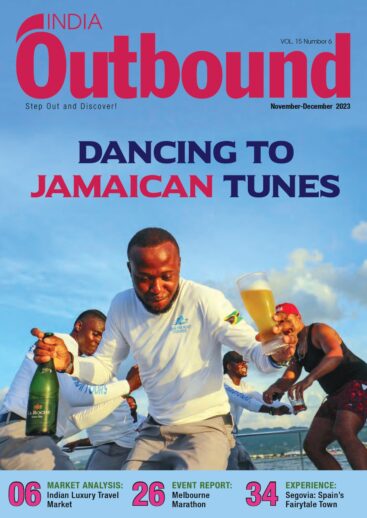
With close to 28 million departures last year, the Indian outbound market has been one of the fastest growing source markets for several destinations for over a decade. From a rather lowly 4.2 million international departures in the year 2000, it has grown in double digits for every single year in the past 10 years.
This has resulted in the country emerging as the largest market for a number of neighbouring destinations including Bhutan, Nepal, Maldives and Sri Lanka. For many others including the UAE, Thailand and Malaysia it rapidly became one of the top five source markets globally.
Little wonder then that most of the destinations are keen on restarting travel links with India, even as the country as well as the world continues to battle Covid-19 pandemic that has entirely disrupted the tourism industry as never before. Even while India was registering a sharp increase in daily infection rates of Covid-19, Maldives pushed the Indian government to enter into an air bubble agreement that would allow businesspersons and travellers from India to head to the archipelago, barely an hour’s flight away from the southern part of the country.
“I am very happy with this development. India is one of the most important markets for Maldives tourism, and the industry eagerly looks forward to welcoming Indian holidaymakers to the Maldives once again. I want to assure travellers that we have taken steps to ensure the safety of visitors. I am sure that we can sustain this very important travel bubble between the two countries, with the measures taken in both the countries,” says Thayyib Mohamed, MD, Maldives Marketing and Public Relations Company (MMPRC) that promotes Maldives as a tourism destination worldwide.
In anticipation of tourist arrivals from most of its key markets, including India, almost all of its 160 resorts have also resumed functioning and tourism officials say that over 800 guest houses in inhabited islands for budget-travellers have also restarted functioning.
Other neighbouring destinations like Nepal and Sri Lanka, too, hope to start receiving travellers from India as soon as the air connectivity is re-established and Indian government removes the ban on Indians travelling overseas for tourism.
But destinations further away or those that have put India on the negative list due to the current situation of Covid-19 pandemic in the country have also kept India firmly in their sights. Visit Britain, for instance, has kept on its engagement with the Indian travel trade and kept them informed of the safety and health measures being taken by hospitality and tourism partners in the UK.
“Whilst we can’t actively promote travel to Britain, we’re working hard to plan our response to Covid-19 across the business. This means that when the time comes for us to promote travel to Britain once more, we will have maintained a warm dialogue with the trade and consumers to ensure Britain remains top of mind. We have consistently engaged with over 4000 partners in the travel trade through webinars since April 2020,’’ says Vishal Bhatia, country manager of VisitBritain in India.
“Our campaign, Day Dreaming with VisitBritain is on our website and we are also promoting it through our Facebook, Instagram and Twitter channels. The campaign invites our partners and influencers to contribute via blogs on their memories of Britain. In addition, we are also hosting ‘Travel Hangovers’ every Friday on Instagram using the recently launched reels feature to invite bloggers/influencers to share pre-recorded videos on Britain,” he adds.
Just like VisitBritain, a number of other National Tourism Organisations have also been busy with promoting their destinations virtually in India over the past few months. Many of them have been innovative and creative in spreading their message and staying on top of the mind of the potential travellers from India. (See article on page 28).
Down in the Pacific and about 19,000 km from London, New Zealand has also launched its own campaign, Messages from New Zealand in India. “The objective of the campaign is to share a message, start a dialogue and to create a connection with our international whānau (family) and to build brand love for New Zealand, reminding Indians and travellers from around the world that while borders are closed for now, New Zealand is waiting to welcome them again when the time is right. The campaign will run for an initial period of six to nine months and may be extended until end of 2021,” says Steven Dixon, regional trade marketing manager, Asia, Tourism New Zealand.
“Pre-covid, we focused our marketing efforts to draw international visitors to New Zealand. While visitors can’t come to New Zealand right now, it’s incredibly important to build brand love and preference for New Zealand in the hearts and minds of our global audience. This will ensure that when borders do reopen, New Zealand remains top of mind for Indian consumers,” he adds.
Trickling traffic of travellers
Even though the pandemic is still raging across India, which is now the third-most infected country in the world, a small trickle of travellers has begun to travel to a handful of destinations, thanks to the ‘air-bubble’ agreements that Indian government has signed with about a dozen nations. Most of these travellers are either businesspersons or permanent residents of those nations and in some exceptional cases those visiting their families. As the UK is home to one of the largest sections of Indian diaspora, it is no surprise that some of the earliest visitors from India are headed there.
“Over the past few weeks, we have seen a revival of flights between major cities in India and London as part of the ‘travel bubble’ agreement between the two countries, for people who wish to repatriate. However, we are also witnessing a small but sizeable number of visitors from India visiting their friends & family in the UK. Hence, we expect the VFR segment to continue travelling to the UK. We hope to see the return of scheduled flights & resumption of normal traffic between India & the UK by early next year,” says Bhatia.
The trend is likely to pick up pace as universities and colleges in the UK open up for foreign students as almost 250,000 Indian students go each year to the country for their onward studies. After the Chinese, Indians make up for the largest group of foreign students in the United Kingdom. Similar is the case with countries like the United States, Canada, the European Union and a number of the Gulf Cooperation Council countries where thousands of Indian workers have gone to resume work after several months of forced vacation in India due to the Covid-19 pandemic.
However, as many countries such as Thailand, South Africa, Bhutan or Japan remain closed to visitors from India, they hope that the pandemic subsides at the earliest so that travel can resume quickly. New Zealand is one such destination. “Keeping in mind the current Covid-19 pandemic and the restrictions implemented with it, the travel industry has been impacted tremendously. However, Indian travellers are some of the world’s most intrepid, with a great desire for adventure, so we believe the market will be revived when travel is possible again,” says Dixon.
Strategy for India
Even though there is still a dense cloud of uncertainty over what the future, short-term or even mid-term, may hold for the global tourism industry, many destinations have begun strategising about how to attract the Indian travellers as soon as travel becomes feasible. For most of the destinations, the objective is simply to stay connected with the potential travellers and keep the communication going on in order to stay at the top of the mind for the day when tourism revives in a significant manner. This is pretty much what VisitBritain has decided to do in India. “Our strategy in India is to continue staying ‘top-of-mind’ for the Indian traveller. As part of our India strategy, we are working with airline partners to help support new routes which have been recently launched. Whilst we can’t actively promote travel to Britain, we’re working hard to plan our response to Covid-19 across the business. We have launched a campaign, Know Before You Go, a clear and simple message that compels those intending to travel within and to the UK, to check before setting off. It is also a tool to reassure travellers that steps have been taken by local tourism businesses and the industry to encourage visitors to research before they leave home and therefore travel responsibly and respectfully,’’ says Bhatia.
Indian market scenario 2021
Keeping a close watch on the rapidly evolving situation of the pandemic across the world, most destinations are staying on their toes and adapting their messages as well as strategies as per the latest situation. In March, when the ban on international flights had just been announced and the lockdown imposed, many NTOs as tour operators, as well as the travellers themselves, had hoped that the crisis would pass and travel resume by late summer or early autumn, even as they suspended their key activities.
A few weeks on, as they realised that the crisis may keep Indian travellers away for almost the entire year, they began to rethink their strategy and began engaging with the travel trade as well as the tourists. Most destinations like South Africa, Germany or South Korea conducted online training for their travel trade partners in India, using the period of slack business, to enhance the awareness of the agents about the destination as well as the novelties there. Many destinations also used the online training to inform the agents about the steps being taken by key players like hotels, travel assistance companies, entertainment parks and the like to ensure the safety of the travellers as well as their own employees.
Now as it is evident that travel from India is unlikely to resume in a meaningful manner before end of first quarter of the next year, many have begun focusing on fine tuning their strategies to be sure that they get the first rush of travellers whenever that happens.
“Our plans continue to evolve and focus will be on growing volume & value to the UK while working closely with trade partners & keeping Britain as the preferred destination of choice for your next holiday, through our media & consumer outreach. We are also pleased to see that airline access has already increased considerably since the travel bubble agreement came in place in July 2020 & expect it to return to near pre-covid levels by summer 2021,” says Bhatia of VisitBritian.
“The travel industry has been impacted by the Covid-19 crisis tremendously in the past few months and it is important now more than ever, that we stay connected to visitors and our travel trade friends in India. We hope that New Zealand will continue to grow as a preferred holiday destination for Indian travellers. Our target is long term and focused on sustainable growth which delivers the best experiences for our visitors and enriches New Zealand. We believe in practicing regenerative tourism which essentially means ‘giving back more than we consume’ and this belief continues to be at the heart of every single thing we do. When we measure success, it isn’t all about volume of visitor arrivals, it’s about when those visitors travel, where they go within New Zealand and the experiences they enjoy,” says Dixon.
He adds that the key target audience are potential Indian outbound travellers who are aware of New Zealand but may or may not have New Zealand in their consideration set. Travellers opting for independent travel and self-drive are likely to be the preferred choice of travel style over group tours, says Dixon. “We could see incentive travel begin as well. However, we see that travel as a discretionary activity will become more exclusive, purposeful and less spontaneous. Outbound travel rebound is likely to be stronger among younger travellers who are less risk averse. Additionally, travellers would have potentially reassessed their priorities in life and possibly pursue more purpose-based trips to connect beyond material wellbeing. They will likely be more interested in eco/sustainable, wellness, organic, nature-based experiences. They would be seeking an escape to, or to rejuvenate in, a pristine environment and reconnect with nature, while maintaining material comforts,” hopes Dixon.
As the worst year in the history of global tourism draws to a close, almost every stakeholder – be it travel agents, airlines, destinations or indeed the travellers themselves – are hoping for the best but preparing for the worst.
























